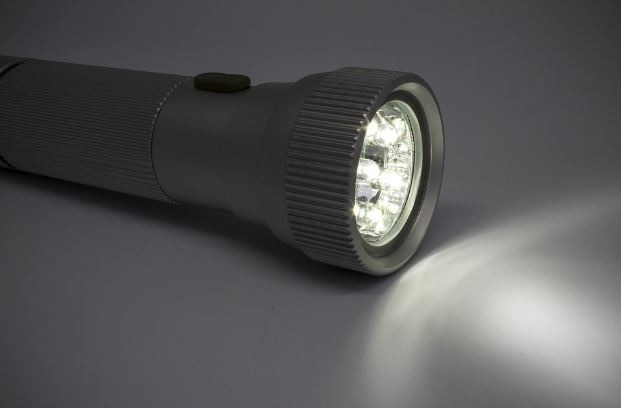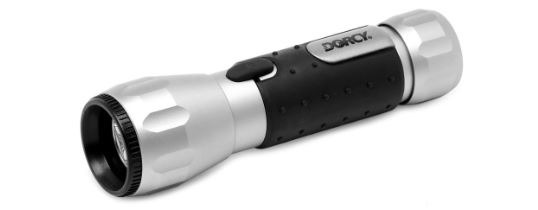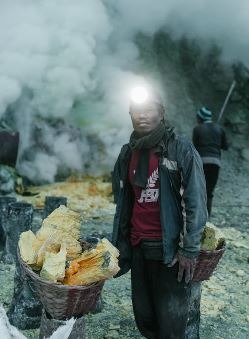The flashlight is a handy device that everyone uses for various tasks. It is used to get around in the darkness, fix mechanical faults in equipment, go camping, and in many different situations.
You would have heard the word ‘torch’ instead of a flashlight. It may have confused you at some point.
Keep all your doubts aside and read on to find the answer to the question, “why are flashlights called torches?”. Do they refer to the same thing or two different things?
Why Are Flashlights Called Torches?
People in the United States refer to a handheld electric light as a flashlight. Batteries usually power these. Some devices have battery compartments and charging ports to recharge after use.
Different types of flashlights are available depending on their purpose. Flashlights also come with options to adjust the brightness, beam, etc. More on the various kinds of flashlights later on.
Torch Or Flashlight?
You would have heard people using the word ‘torch.’ Have you ever wondered what it means? Is it the same as what you call a flashlight? Or is it a completely different device?
A flashlight and a torch are technically the same. A torch is what many British English-speaking countries call a flashlight. As you expected, the word came into use in Britain. Up to this day, Britons refer to flashlights as torches. More on the history of torches later on.
About Britain’s ‘Electric Torch’
Before the invention of the flashlight, the word ‘torch’ was popularly used to indicate a stick with a combustible material at the end, which can be lit and turned into a light source.
Excellent examples of torches that Americans describe are the one in the Statue of Liberty and the Olympic torch.
When torches were introduced, the Britons called these the ‘electric torch,’ referring to an electric version of the above burning stick. Later, the word ‘electric’ was dropped because of the decline in using the above-mentioned burning sticks.
A majority of countries that use British English call the flashlight the torch. However, Canada uses the term flashlight, although it is a British English-speaking country.
History Of The Torch
The National Carbon Company manufactured the first dry cell battery in 1896. It happened after German physician Carl Gassner invented it in 1888. The dry cell battery consists of an electrolyte in paste form instead of liquid.
The dry cell battery gave the advantage that it didn’t break or spill as quickly as its predecessor. Therefore, it was ideal as a portable light source. That is how the torch came about in 1899 when British inventor David Misell developed the first model.
The Americans called it a flashlight because it couldn’t provide constant currents for extended periods. It was due to the zinc-carbon batteries that powered flashlights initially.
So, they had to keep being turned off, which is synonymous with giving out flashes of light. The Russian inventor Conrad Hubert aptly named the device ‘flashlight.’
How Do Flashlights Work
In earlier flashlights, the bulb, the illumination source, was either a tungsten filament incandescent bulb. The flashlights that we see today commonly feature LED bulbs.
The power source that produces electrons is usually made through batteries, either rechargeable or disposable.
Flashlights with alkaline batteries are affordable and can last between four and ten hours. Flashlights with rechargeable batteries are powered by lithium-ion.
A basic flashlight consists of a bulb, reflector, and electric cells covered in a plastic case with a slide switch.
Different Types Of Flashlights
Today, many types of flashlights are available depending on the purpose each one is used for. Here are a few of the common types of flashlights available, along with their purpose.
- Tactical flashlight: As the name says, these flashlights are designed for tactical use, especially in the police and military. They are very small and can be mounted on a weapon. These flashlights are very bright and are made from aluminum for robustness.
- Penlight: These flashlights are shaped like a pen and are commonly seen in use in the medical industry. They are useful when inspecting the mouth and throat and assessing the eye pupil response.
- Clip flashlight: These lightweight flashlights are ideal to use during activities like camping. You can easily clip them onto rucksacks or carry-on, so you have a handy flashlight on the go.
- Rechargeable flashlight: These flashlights have lithium-ion batteries and cost less in the long run since you don’t have to replace batteries often. They are environmentally friendly and have a higher upfront cost. However, they provide more light.
- Right angle flashlight: These flashlights come with an articulating head which makes it easy to adjust the angle and position of the light. It’s a hands-free device attached to the user’s chest and is commonly seen with firefighters.
- Head flashlight: This flashlight also leaves your hands free as it is affixed to a headpiece. It is ideal to use while hiking, camping, and caving.
Outlighter.com provides the key features, pros, and cons of some of the best flashlights available. It is a must-read if you need to buy a high-quality flashlight for a specific purpose.
Flashlight Performance
The performance of a flashlight is based on the below factors.
- Light output: The total amount of visible light that the flashlight produces is measured in lumens. The more lumens a flashlight produces, the brighter the light will be.
- Beam distance is how far the light can reach and is measured in meters.
- Run time: The time it takes for the light output to decrease to 10% of the rated output of new batteries. The run time of a flashlight is measured in hours.
- Water resistance: It is rated using the IPX system and is useful when using the flashlight in the rain or around bodies of water.
- Impact resistance: Measured in meters, it is when lights are tested by dropping them six times onto concrete at a given distance. It ensures that the flashlight will work even after accidental drops.
How Do You Power A Flashlight?
Here are a few common ways in which you can power a flashlight.
- Battery-powered: Handy device due to its portability.
- Solar charging: Ideal to use in remote areas where there is no power.
- Micro USB: Offers excellent versatility due to USB ports in cars, computers, electric devices, and plug adapters.
Conclusion
Flashlights and torches are the same and only differ in terms of one being an American-English term and the other being a British-English term.
Flashlights come in many different types with various light outputs and beam distances. They are designed for everything from everyday use to military tasks.
Frequently Asked Questions
Is A Flashlight A Torch?
A flashlight is the same as a torch. The former is part of the American-English vocabulary, while the latter is part of the British-English vocabulary.
Which Countries Call A Flashlight A Torch?
Countries that use British English for conversing call the flashlight a torch. Examples are the United Kingdom and Australia.



